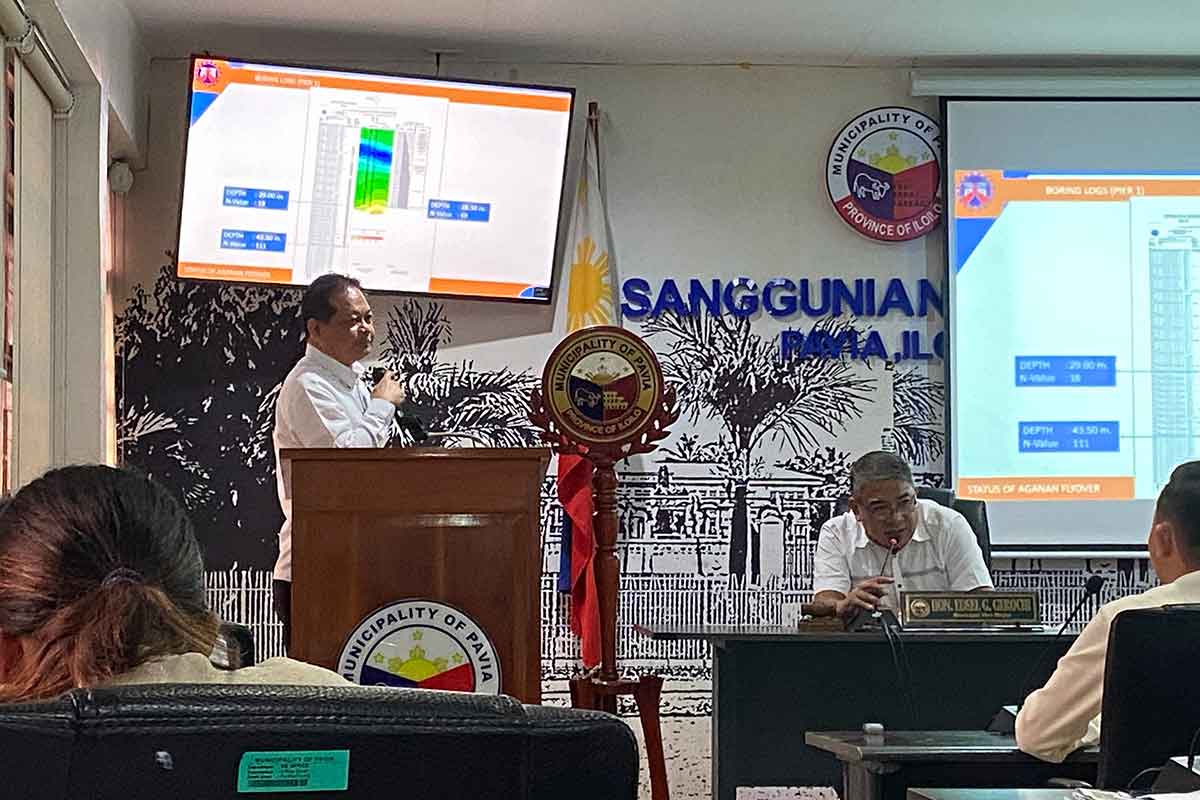
By Joseph Bernard A. Marzan
The Department of Public Works and Highways (DPWH)-Region 6 Director, Engr. Sanny Boy Oropel, requested patience from the Sangguniang Bayan of Pavia, Iloilo, regarding the delayed construction of the Aganan Flyover during the town council’s regular session on Monday, May 6.
The request follows weeks of pleas from the council for the regional office to provide updates on the flyover, which has been stalled since April 2023.
Oropel reiterated earlier statements to Daily Guardian that their confirmatory and seismic tests produced results differing from those by the United Technologies Consolidated Partnership (UTCP), the Pasig City-based firm contracted by the DPWH’s Bureau of Design (BOD) for the detailed engineering design of the Aganan Flyover and the Ungka Flyover, which currently under rectification.
He expressed concerns about the discrepancies in the findings, suggesting that UTCP may have used different data, prompting the region to consider a third-party consultant to review the structural concerns.
The confirmatory and seismic tests of UTCP became the bases for the design of the two flyovers. The Ungka flyover was first to show signs of structural weakness after all of its piers or foundations were found to be sinking. In fact, three piers sank by more than 1 foot each.
The DPWH-Region 6 has requested an additional P10 million to P15 million from its central office to hire a third-party consultant, similar to the approach taken for the Ungka Flyover.
A Pasig City-based engineering firm, which conducted the P13-million probe into the Ungka Flyover’s structural defects, recommended its current rectification efforts.
The option to outsource, Oropel said, also stemmed from the fact that it was the BOD who commissioned the design and not the regional office.
“[The test results] show that the data provided by the UTCP during their study, to provide the DPWH with a plan for the flyover is far more different. That is why we already have some doubts about the data that they used,”
“It also bolsters our decision that we need to have a third-party consultant for us to be provided with the exact data. As I’ve said, we have capable engineers, but this is a UTCP design that was commissioned by the [BOD], and we cannot do anything about this design,” he added.
He added that in light of issues with the Ungka Flyover, it would be prudent to thoroughly examine the Aganan Flyover before proceeding with further work.
“Until we can confirm the facts, I regret to inform this august body that we cannot continue or resume activities at the Aganan Flyover,” he stated.
Jose Ma. Trimañez, chairperson of the council’s transportation committee, questioned the need for a third-party consultant instead of relying on the agency’s own assessments.
“In Mr. Oropel’s presentation, it’s clear there is a deficiency. Why not directly make a recommendation? Why do we need additional budget just to verify the truth? So, are you saying we cannot trust you? Right now, we are blaming UTCP. Are they still here? You could’ve addressed this problem earlier,” Trimañez questioned.
Council members also repeatedly asked why the DPWH regional office had to defer to the central office on matters regarding the Pavia flyovers, merely implementing projects approved by their superiors.
Citing a Department Order, Oropel explained that the DPWH limits the authority of district and regional offices based on the cost of projects.
“We are not in the position to design. This is more than our limit of authority to design. The regional office, the district engineering office, and other engineering offices have a corresponding limit of authority. That is why the designs for the [Aganan and Ungka flyovers] were [commissioned and approved] by the [BOD],” the director explained.
According to DPWH Department Order No. 250 series of 2022, regional offices have authority over projects valued between P150 million and P400 million, while projects exceeding that amount fall under the central office’s jurisdiction.



















